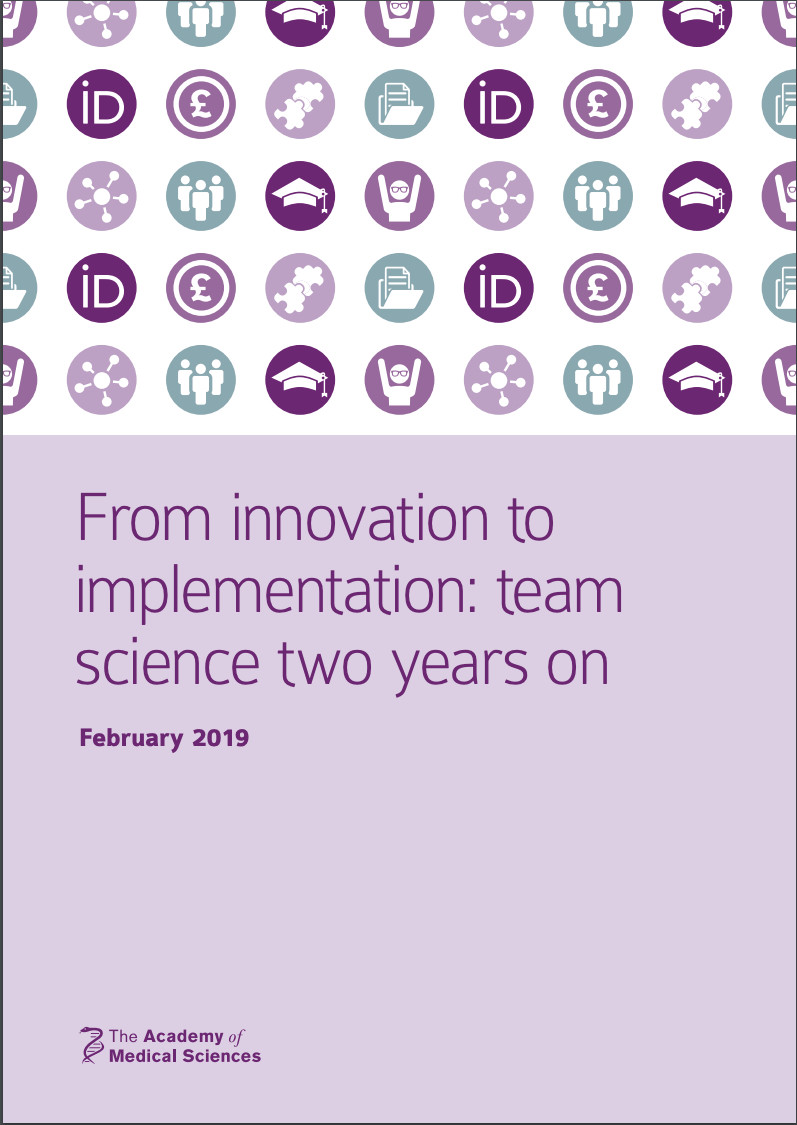This blog post is by Dr Amy Slater, Careers Policy Officer, and supports the two-year follow-up of the Team Science report published by the Academy of Medical Sciences. The report looks at incentives and disincentives for scientists to participate in collaborative group projects and how to help people get recognised and rewarded for their contributions.
Getting published in high-impact journals remains a major benchmark for success in science, but too often we fail to look beyond first and last authors.
With increasingly complex research challenges, scientists are collaborating to leverage the strengths and expertise of professionals trained in different fields. This team science offers crucial new insights, but also creates an increasing number of ‘lost’ middle authors.
In 2016, we published our Team Science report which identified lack of recognition as the major barrier for researchers involved in team science projects. Whilst we continue to rate publication output highly when making decisions about funding, hiring and promotion, the traditional model of gaining recognition in science – designed to suit small, independent research groups – is no longer fit for purpose.
Two years on from this report, the Academy is drawing together employers, funders and publishers to take stock of how far we have come and to stimulate further progress. To accompany this, we’ve highlighted some of the tools and platforms available to support you in getting acknowledged and gaining credit for your work in team science projects.
- CRediT: Contributor Roles Taxonomy
CRediT offers the opportunity to attribute contributing roles to authors on publications from a list of 14 categories. These categories range from funding acquisition to software development to supervision. The taxonomy operates through a list of terms and initials (see an example from Cell Press here) and has been praised for its ease of use. In particular, CRediT clarifies the roles of middle authors and facilitates communication by signposting readers to the researcher of interest. CRediT has gained huge momentum in recent years and is currently implemented in over 120 publications.
- Contribution to papers
Many funders are now asking applicants to provide a contribution narrative to a sub-group of their publications. This is to capture more details about what their role was, e.g. being the lead statistician, clinician or engineer or leading on a sub-project. Make the most of this opportunity to explain your role when offered, as these narratives are considered incredibly useful by peer reviewers and decision panels alike.
- ORCID: Open Researcher and Contributor ID
An ORCID ID is a unique identifier that can distinguish any researcher from others with the same name. It is highly compatible, connecting outputs including publications, databases, grant awards and alternative professional identifiers such as LinkedIn. This provides a powerful single platform for researchers to manage their activities, with an open and transparent infrastructure that functions across disciplines. ORCID is also working on incorporating CRediT into its registry. ORCID is increasingly being adopted by research funders to manage grant applications and outputs, with over 850 member organisations from 42 countries – including the Academy – and a growing community of over 4.5 million individual researchers.
- Researchfish®: Research Impact Assessment platform
Many in the scientific community are seeking to change research culture, helping us look beyond simply a list of publications when measuring research output and impact. Researchfish® offers a platform to capture and share the wider impacts of your research with funders over the course of an award. By feeding directly into the Gateway for Research – a system which allows the public to easily access information about current and past projects, Researchfish® entries help inform future funding strategies and policy development. Unlike ORCID, Researchfish® is project-specific so only collates outputs from a given project. However, integration between ORCID and Researchfish® now means you can easily push and pull information between the two platforms to maximise the publicity of your research whilst minimising the hassle.
- Preprint and post-publication review servers
Another shift away from traditional high-impact journals is the introduction of preprint and post-publication review servers. These innovative publishing platforms offer an alternative to the lengthy (and often costly) standard publishing model, enabling rapid and wide dissemination of research.
- Pre-print servers, such as BioRxiv (pronounced ‘Bio Archive’) speed up the publishing process by enabling researchers to make their findings immediately available online and receive feedback on draft manuscripts before they are submitted to peer-reviewed journals.
- Post-publication review platforms, such as Wellcome Open Research, offer immediate publication followed by open-invite peer review.
Despite the lack of traditional peer review, the quality of data in these platforms is kept high through controls and panels that screen entries. The transparent review model also helps ensure high scientific quality by encouraging free discussion of scientific ideas, in contrast to the closed discussions between pairs of individuals typical of traditional peer review.
Interested in reaching a wider audience? Read more top tips on our Learning Hub.

